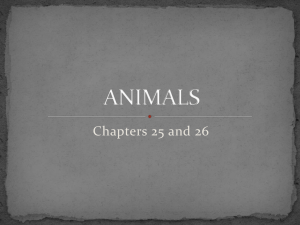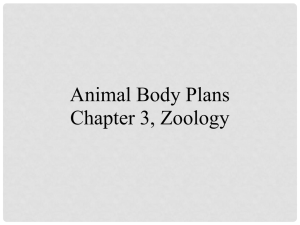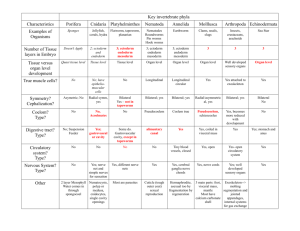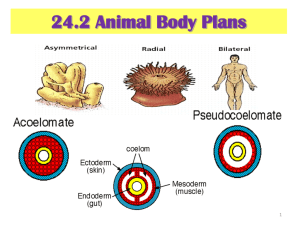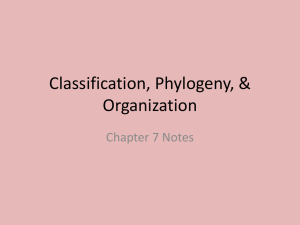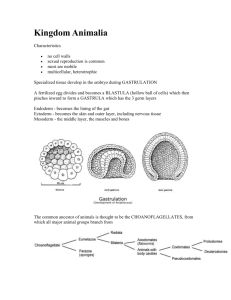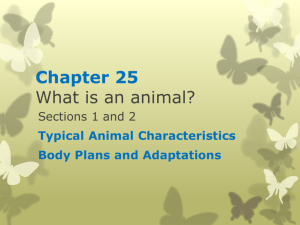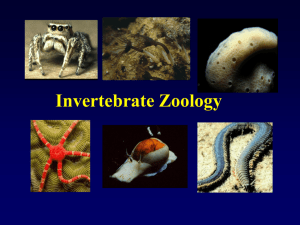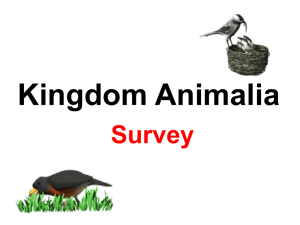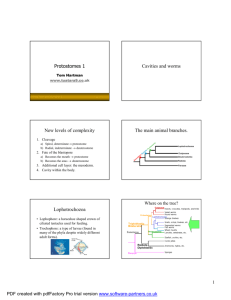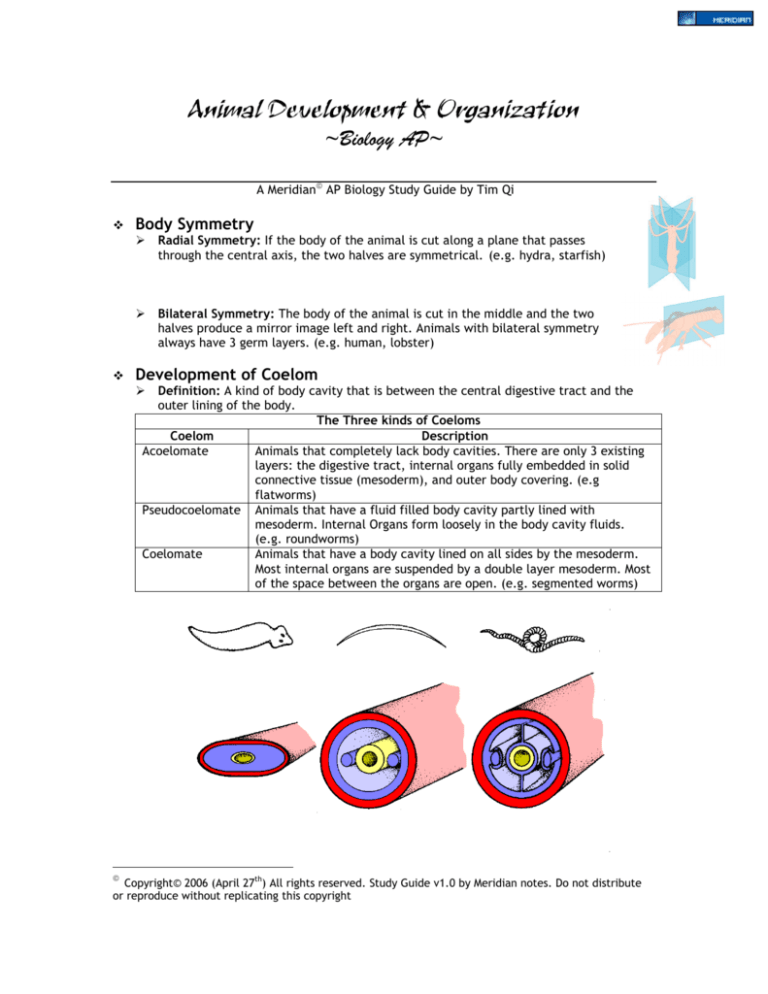
Animal Development & Organization
~Biology AP~
A Meridian AP Biology Study Guide by Tim Qi
Body Symmetry
Radial Symmetry: If the body of the animal is cut along a plane that passes
through the central axis, the two halves are symmetrical. (e.g. hydra, starfish)
Bilateral Symmetry: The body of the animal is cut in the middle and the two
halves produce a mirror image left and right. Animals with bilateral symmetry
always have 3 germ layers. (e.g. human, lobster)
Development of Coelom
Definition: A kind of body cavity that is between the central digestive tract and the
outer lining of the body.
The Three kinds of Coeloms
Coelom
Description
Acoelomate
Animals that completely lack body cavities. There are only 3 existing
layers: the digestive tract, internal organs fully embedded in solid
connective tissue (mesoderm), and outer body covering. (e.g
flatworms)
Pseudocoelomate Animals that have a fluid filled body cavity partly lined with
mesoderm. Internal Organs form loosely in the body cavity fluids.
(e.g. roundworms)
Coelomate
Animals that have a body cavity lined on all sides by the mesoderm.
Most internal organs are suspended by a double layer mesoderm. Most
of the space between the organs are open. (e.g. segmented worms)
Copyright© 2006 (April 27th) All rights reserved. Study Guide v1.0 by Meridian notes. Do not distribute
or reproduce without replicating this copyright
Protostomes & Deuterostomes
Protostomes
Mouth forms at blastopore (anus
form from second opening).
Spiral cleavage: Determinate - cell
fate are decided when they form.
Schizocoelous: Solid masses of
mesoderm split to form coelomic
cavities.
•
•
•
•
•
•
Deuterostomes
Anus forms at blastopore (mouth forms
from second opening).
Radial cleavage: Indeterminate – cell’s
fate are not determined early on.
Enterocoelous: Mesoderm arises as lateral
outpocketings of the archenteron which
forms the coelom.
Animal Classification
Developmental morphology compares the developmental processes of different animals
in an attempt to determine the ancestral relationship between organisms and how
developmental processes evolved.
Animals are all metazoan, mostly bilateral, and formed from colonial protists.
*The following information probably will not appear in-depth on exams in MV.
However, they are very likely to appear in SAT II Biology and AP Biology exams.
Porifera
Cell
Layers
Two
None
Animal Phyla
Blood
Body cavity
circulation
None
None
Cnidaria
Two
Radial
None
None
Platyhelminthes
Three
Bilateral
none
Acoelomate
Nematoda
Three
Bilateral
none
Pseudocoelomate
Annelida
Three
Bilateral
Open
circulation
Coelomate
Mollusca
Three
Bilateral
Open
circulation
Coelomate
Arthropoda
Three
Bilateral
Open
circulation
Coelomate
Echinodermata
Three
Radial
Water
Vascular
Coelomate
Chordata
Three
Bilateral
Closed
Circulation
Coelomate
Name
Symmetry
Descriptions
Lack tissue, and ingest
bacteria/tiny particles.
One body opening and
gastrovascular cavity.
Flattened and
unsegmented with a head.
Most are microscopic with
cylindrical bodies.
All internal organs are
segmented in individual
units except for digestive
tract.
3 body sections: Foot
(movement), Visceral mass
(organs), Mantle (shell)
Exoskeleton made of
chitin, segmented body,
and joint appendages.
Have tube feet used for
feeding, gas exchange,
excretion, and movement.
Have notochord, hollow
nerve chord and gill slits.
And tail (at some point in
life).

